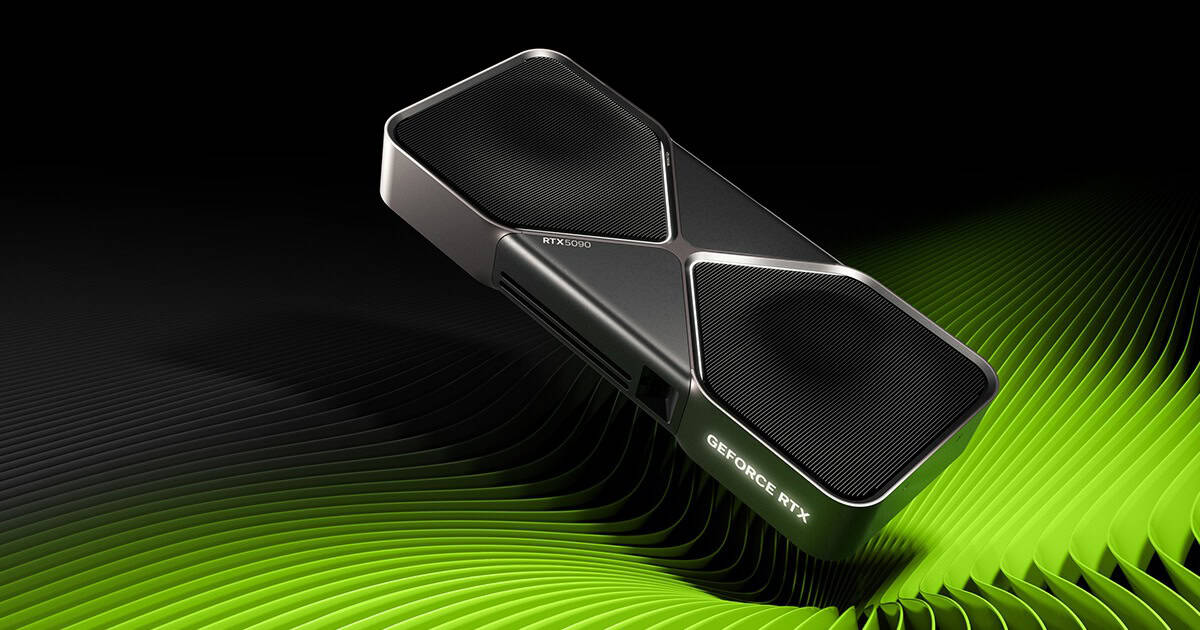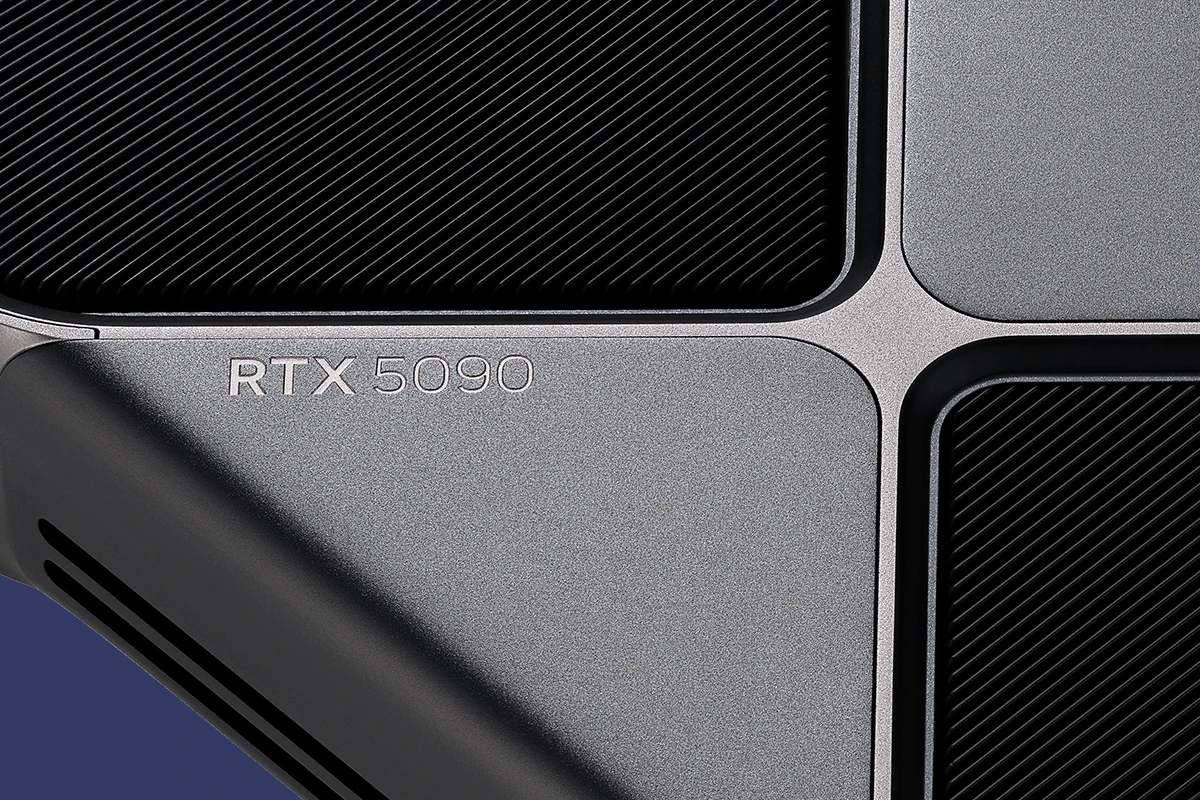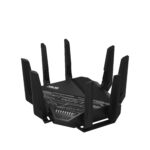NVIDIA has introduced its latest line of graphics cards, the RTX 50 series. These new GPUs offer improved performance over their predecessors. The RTX 5090, 5080, 5070 Ti, and 5070 models show gains in ray tracing capabilities without using DLSS technology.
The performance boosts for native ray tracing range from 15% to 30% compared to previous generation cards. This advancement allows for more realistic lighting and reflections in games and 3D applications. NVIDIA continues to push graphics technology forward with each new GPU release.
Blackwell Power: The RTX 50 Series and Its Impact

What Makes the RTX 50 Series Special?
The NVIDIA GeForce RTX 50 series, powered by the Blackwell architecture, marks a big step forward in graphics card technology. It’s not just about better frame rates; these GPUs bring significant improvements in AI performance and ray tracing. This means games look better and run smoother, and creative tasks become much faster.
Key Architectural Changes
The Blackwell architecture is the core of the RTX 50 series. It offers substantial performance and efficiency gains over the previous Ada Lovelace architecture. This is achieved through several key changes:
- Improved CUDA Cores: These handle general-purpose computing tasks. They are more efficient in Blackwell.
- Enhanced Tensor Cores: These are dedicated to AI calculations. Blackwell has a huge increase in their performance. This is key for features like DLSS.
- Upgraded Ray Tracing Cores: These cores handle the complex calculations for ray tracing, making in-game lighting and reflections more realistic.
Performance Gains and New Features
Early benchmarks show the RTX 50 series delivers significant performance improvements over the RTX 40 series. This is especially true for AI-related tasks and ray tracing.
DLSS 4: A Game Changer
DLSS (Deep Learning Super Sampling) uses AI to upscale lower-resolution images to higher resolutions. This improves performance without sacrificing much image quality. DLSS 4 is the latest version. It’s even better at upscaling and can generate entirely new frames using AI. This can greatly boost frame rates, especially at higher resolutions.
Ray Tracing Improvements
The RTX 50 series has more powerful ray tracing cores. This allows for more complex and realistic ray-traced effects in games. Expect better reflections, shadows, and global illumination.
FP4 Precision
The RTX 50 series supports FP4 precision. This is a new format for storing numbers used in AI calculations. FP4 is more efficient than previous formats, which leads to a big increase in AI image generation performance.
Who Should Consider the RTX 50 Series?
The RTX 50 series is aimed at serious gamers and content creators who demand the best performance.
- Gamers: If you want the highest frame rates, the best graphics, and the latest features like DLSS 4, the RTX 50 series is a great option.
- Content Creators: If you work with video editing, 3D rendering, or AI image generation, the RTX 50 series can significantly speed up your workflows.
Comparing RTX 50 Options
NVIDIA typically releases several different cards within a series. Here’s a comparison of some likely options:
| Card | Target Audience | Expected Performance |
|---|---|---|
| RTX 5090 | Enthusiasts, professionals | Highest performance, best features |
| RTX 5080 | High-end gamers, content creators | Excellent performance, great value |
| RTX 5070 | Mainstream gamers | Solid performance at a more affordable price |
Addressing Common Questions
- Will my power supply be enough? The RTX 50 series is powerful, so you may need a higher wattage power supply. Check the specific requirements of the card you want.
- Will my CPU bottleneck the GPU? If you have an older CPU, it might limit the performance of the RTX 50 series. A modern CPU is recommended.
- When will the cards be available? Check NVIDIA’s official website and retailers for release dates and availability.
Beyond Gaming: AI and Content Creation Benefits
The RTX 50 series isn’t just for gaming. The improved AI performance has big implications for content creation. Tasks like video upscaling, image editing, and 3D rendering can be done much faster. The FP4 precision also boosts AI image generation. This makes the RTX 50 series a valuable tool for artists, designers, and other creative professionals.
Considerations for Upgrading
If you have a relatively recent graphics card, like an RTX 30 or 40 series card, consider if the upgrade is worth it for you. If you are on an older card, the RTX 50 offers a great performance jump. Consider your budget and the specific features you need.
The RTX 50 series represents a major leap in graphics technology. With its focus on AI, ray tracing, and raw performance, it’s a compelling choice for serious gamers and content creators.
For those interested in maximizing their PC’s performance beyond just the graphics card, understanding CPU capabilities is also important. The central processing unit (CPU) works in tandem with the GPU to handle different aspects of computing. While the GPU focuses on graphics rendering, the CPU manages overall system operations, including running the operating system, handling input/output, and managing application logic. A powerful GPU like the RTX 50 series needs a capable CPU to avoid bottlenecks, where the CPU’s processing power limits the GPU’s ability to perform at its full potential. Therefore, when considering an upgrade to an RTX 50 series card, it’s also worth evaluating your current CPU and considering an upgrade if necessary to ensure balanced system performance. This ensures that both components work together harmoniously, providing the best possible experience for gaming, content creation, and other demanding tasks.
For example, pairing an RTX 5090 with an older, less powerful CPU could result in the GPU being underutilized, wasting its potential. On the other hand, a modern, high-end CPU like an Intel Core i9 or an AMD Ryzen 9 would be a better match, allowing the RTX 5090 to operate at peak efficiency. This balance is crucial for achieving optimal performance and avoiding unnecessary expenses on a high-end GPU if the rest of the system can’t keep up. So, when planning your next PC upgrade, remember to consider both the GPU and CPU as equally important components for a well-rounded and powerful system.
Key Takeaways
- New RTX 50 series GPUs offer improved performance
- Ray tracing gains of 15-30% without DLSS
- Advancements enable more realistic graphics in games and apps
NVIDIA’s RTX 50 Series: Performance Boost with DLSS 4
The NVIDIA RTX 50 series GPUs, utilizing the advanced Blackwell architecture, deliver significant enhancements in AI processing, ray tracing, and overall graphical performance. These improvements lead to smoother gameplay at higher resolutions and more realistic visuals, with benchmarks indicating up to a 50% performance increase over the previous generation. Key architectural upgrades include better CUDA cores, enhanced Tensor Cores for AI tasks like DLSS, and improved Ray Tracing Cores, making the RTX 50 series an excellent choice for gamers and content creators.
NVIDIA’s new RTX 50 series graphics cards promise big gains in gaming performance. The company recently shared details on four new models: RTX 5090, 5080, 5070 Ti, and 5070. These cards offer faster speeds than their predecessors, but the full 2x boost requires DLSS 4 technology.
Without DLSS, the performance gains are more modest:
- RTX 5090: 30% faster than RTX 4090
- RTX 5080: 15% faster than RTX 4080
- RTX 5070 Ti: 20% faster than RTX 4070 Ti
- RTX 5070: 20% faster than RTX 4070
These native performance boosts apply to ray tracing scenarios. While not as large as past generational leaps, the new cards bring other improvements.
New Features
The RTX 50 series supports:
- Neural rendering
- Neural shading
- RTX Fur
- RTX Hair
- RTX Skin
These features may entice gamers to upgrade, even with smaller raw performance gains.
Resolution Targets
- RTX 5090 & 5080: Best for 4K gaming
- RTX 5070 Ti & 5070: Great for 1440p gaming
All four cards can handle 4K with DLSS 4 enabled.
Memory Specs
- RTX 5090: 32 GB GDDR7
- RTX 5080: 16 GB GDDR7
- RTX 5070 Ti: 16 GB GDDR7
- RTX 5070: 12 GB GDDR7
The RTX 5090’s large memory makes it ideal for content creators and gamers with high-res displays.
Release Dates and Pricing
| Model | Release Date | MSRP |
|---|---|---|
| RTX 5090 | January 30 | $1999 |
| RTX 5080 | January 30 | $999 |
| RTX 5070 Ti | February | $749 |
| RTX 5070 | February | $549 |
DLSS 4: The Key to 2x Performance
NVIDIA’s claimed 2x performance boost relies on DLSS 4 with Multi-Frame Generation (MFG). This AI-powered upscaling technology is crucial for reaching top frame rates.
Gamers should expect the best results with DLSS 4 enabled. Native performance gains are good, but not as dramatic.
Who Should Upgrade?
The RTX 50 series may appeal to several groups:
- 4K gamers seeking max performance
- Content creators needing more VRAM
- Gamers wanting to future-proof for new graphics tech
- Users of older RTX cards (20 or 30 series)
Owners of RTX 40 series cards may find less reason to upgrade unless they need specific new features.
The Bigger Picture
NVIDIA’s focus on DLSS shows the growing importance of AI in gaming. As games become more complex, upscaling tech helps balance visual quality and performance.
The RTX 50 series continues this trend. While raw power increases are smaller, the cards offer new tools for developers to push graphics further.
Gamers will need to weigh the benefits of new features against the cost of upgrading. The true value of these cards may depend on how quickly game makers adopt NVIDIA’s latest tech.
NVIDIA GeForce RTX 50 GPU Details (Early Look)
The NVIDIA GeForce RTX 50 series brings big upgrades to graphics cards. The top model, the RTX 5090, has 21,760 CUDA cores. This is 33% more than before. It also has 32 GB of new GDDR7 memory. The memory runs at 28 Gbps on a 512-bit bus. This gives it 1792 GB/s of bandwidth.
The RTX 5080 has 10,752 CUDA cores and 16 GB of GDDR7 memory. Its memory runs at 30 Gbps on a 256-bit bus. This results in 960 GB/s of bandwidth.
For the RTX 5070 Ti, NVIDIA packed in 8,960 CUDA cores. It has 16 GB of GDDR7 memory at 28 Gbps. The RTX 5070 has 6,144 CUDA cores and 12 GB of GDDR7 memory. Both use a 256-bit and 192-bit memory bus.
Lower-end models like the RTX 5060 Ti and 5060 are still in the works. They may have 16 GB and 8 GB of GDDR7 memory on a 128-bit bus.
The RTX 50 series uses new DLSS technology. This helps boost frame rates and image quality. The cards also support DisplayPort 2.1 for high-refresh 4K and 8K displays.
Power use has gone up. The RTX 5090 needs 575W, while the 5080 uses 360W. The 5070 Ti draws 300W and the 5070 pulls 250W.
NVIDIA plans to launch these cards starting January 2025. Prices range from $549 for the 5070 up to $1,999 for the 5090.
Key features:
- New Blackwell GPU architecture
- GDDR7 memory across the lineup
- Big jumps in CUDA core counts
- Higher memory bandwidth
- Support for neural rendering tech







